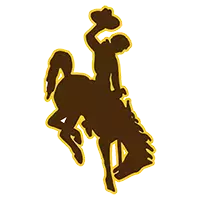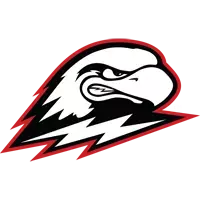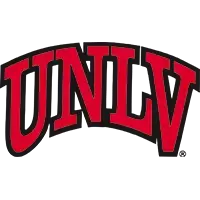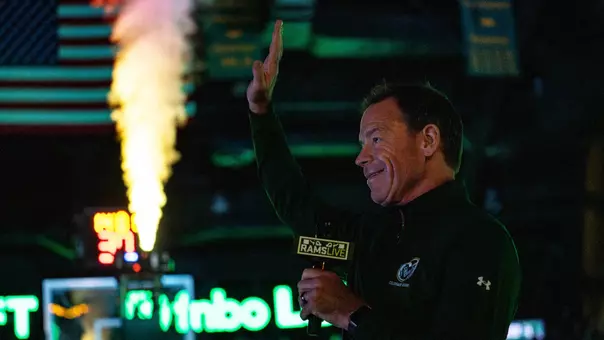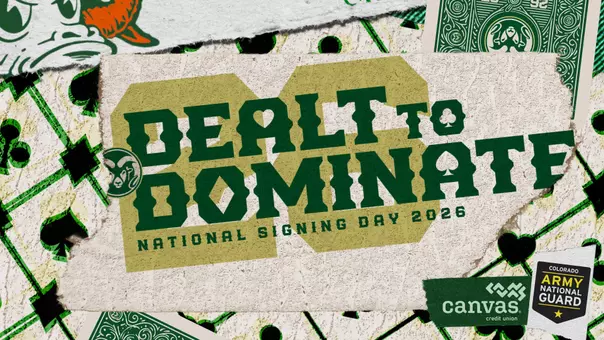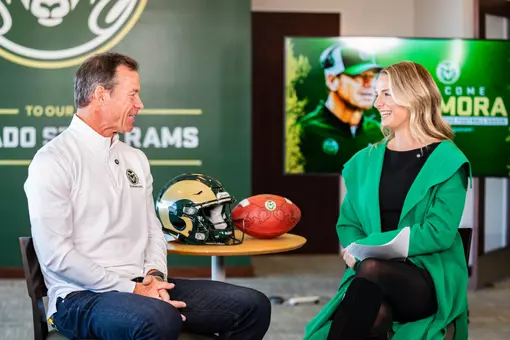Colorado State University Athletics
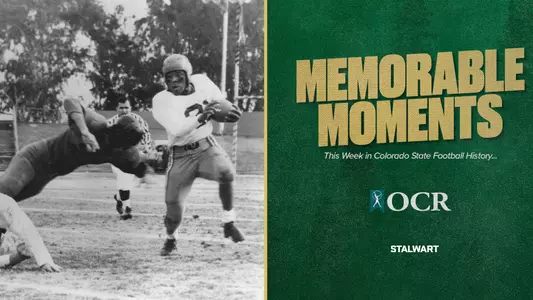
Memorable Moments: Remembering the Raisin Bowl Aggies
9/28/2023 3:19:00 PM | Football
Team was first in program history to play in a bowl game
On November 25, 2022, 94-year-old Frank Faucett and his wife Barb settled in their seats in section 135 at Canvas Stadium to watch the Rams beat the Lobos in a 17-0 shutout. It was Frank's 75th season watching CSU football, either from the sidelines or from the stands at Colorado Field, Hughes Stadium or Canvas Stadium. On July 7, 2023, Frank passed away at the age of 95, one of the last members of the famed 1949 Raisin Bowl team to watch the Rams play.
There are few members of the 1948 Colorado A&M football team left to tell us their stories about a season to remember. Frank was the last Fort Collins resident from that team, Don "Tuffy" Mullison, Ollie Woods, Fum McGraw, Dale Dodrill and many others had told their stories too, all are gone now.
The 1948 football season was the second of head coach Bob Davis's teams. He had been hired after the 1946 season to transform Colorado A&M Football in 1947, with a new system known as the "two-platoon" where players could be specialists on offense or defense and not everyone had to play both sides of the ball. He also removed the wing formation in favor of the T-formation, with Bob Hainlen anchoring the offense at quarterback.
The two starting halfbacks in 1948 were Keith Thompson and the legendary Eddie Hanna with backups being Frank Faucett and Joe Folsom. The team's name was even in transition under Davis. Since 1899, they had been known as the Aggies, but with the institution of a Ram mascot in 1945, many of the post-WWII students wanted the team to be called the Rams. Newspapers often used both names in one sentence, some called them the Aggie-Rams. It was a time of change on the campus and Davis' football team made the first move in athletics.
They opened the season with wins over Colorado College (the first night game on campus), New Mexico State, Utah State and DU before traveling to Laramie for an epic game. Both Colorado A&M and Wyoming were stacked with WWII vets and with renewed interest in the game of football. Although the two schools had played one another since 1899, there was little that resembled a rivalry until the 1948 game.
The "Cinderella Rams," as many newspapers called them, met an undefeated Wyoming team on October 16th and the teams fought tooth and nail with the Rams ahead 21-14 with little time on the game clock. The Cowboys engineered a drive to score a touchdown with less than two minutes on the clock. As they tried to tie the game, Dodrill broke through the line and blocked the point-after kick, as Colorado A&M went on to win the game. Afterwards, A&M fans stormed the field tearing down the Wyoming goal posts. Wyoming fans didn't like that, and a brawl ensued. As Mullison ran to the locker room, he was hit over the head with a bottle of beer, knocking him unconscious even with his leather helmet still on his head.
The Rams then suffered their first loss to Drake at Colorado Field the following week. A win over Colorado Mines and a loss to Utah put Colorado A&M in second place in the Skyline Conference, just ahead of Wyoming. After beating BYU in Fort Collins, the Aggies had a 7-2 record with one final game to be played in Boulder.
It was commonly known that if Colorado A&M beat their rivals in Boulder, they would likely receive their first invitation to a bowl game. Davis and the Rams traveled to Boulder on November 20th to face the Buffaloes, who had bolted from the Skyline Conference the previous year. The CU administration wanted "Big Time College Football" and moved to the Big 7 Conference for the 1948 season. While Aggie fans called CU "Big Time Charlie" the CU fans scoffed at the idea the Rams could beat them in their new conference.
The Rams came out fighting and so did the Aggie fans. With halfback Folsom out due to injury, Davis brought in a reserve halfback who had been known more as a track star than for football. Jack Christiansen had come to Colorado A&M to run track, but his speed caught Davis's attention and he was asked to play football in 1948. Christiansen took the first punt he received all the way back for a touchdown and launched what would become a pro football hall of fame career.
The Rams beat the Buffs 29-25 as the goalposts at another rival came down, thanks to Aggie fans storming Folsom Field after the game. The headline in the Rocky Mountain Collegian read, "Big Time Charlie Bites Dust." Two days later, Colorado A&M was invited to play in the Raisin Bowl on January 1, 1949. It was the first time any CSU football team had been invited to play in a bowl game, and the Rams were on their way to Fresno, Calif., to play Occidental College.
The game was played on a mud-soaked field at Ratcliffe Stadium and filmed by Universal Studios for the 1949 motion picture, "Yes Sir, that's my Baby." Clips of that film survived, both in black and white and color. Hanna was the star of the game with two 70-plus yard touchdown rushes, but a blocked extra point, kicked by Frank, made the difference in the 21-20 loss to the Tigers. The Rams flew home to a blizzard in Denver, having to off-load the underclassmen, Athletic Director Harry Hughes and equipment to take off after a fuel stop in Wyoming. Frank told that story at his last game watching CSU beat New Mexico.
While nearly all of the members of that first bowl team are gone now, it is a moment of pride at CSU that our Aggies (or Rams) played in a bowl game where three African American athletes played, the most in any bowl game that year for a school of predominantly white students. Several players, including Christiansen, McGraw and Dodrill went on to successful NFL careers. The 1948 Aggie-Rams will always be a team CSU fans will be proud of, even when we celebrate the 100th anniversary of that season.
There are few members of the 1948 Colorado A&M football team left to tell us their stories about a season to remember. Frank was the last Fort Collins resident from that team, Don "Tuffy" Mullison, Ollie Woods, Fum McGraw, Dale Dodrill and many others had told their stories too, all are gone now.
The 1948 football season was the second of head coach Bob Davis's teams. He had been hired after the 1946 season to transform Colorado A&M Football in 1947, with a new system known as the "two-platoon" where players could be specialists on offense or defense and not everyone had to play both sides of the ball. He also removed the wing formation in favor of the T-formation, with Bob Hainlen anchoring the offense at quarterback.
The two starting halfbacks in 1948 were Keith Thompson and the legendary Eddie Hanna with backups being Frank Faucett and Joe Folsom. The team's name was even in transition under Davis. Since 1899, they had been known as the Aggies, but with the institution of a Ram mascot in 1945, many of the post-WWII students wanted the team to be called the Rams. Newspapers often used both names in one sentence, some called them the Aggie-Rams. It was a time of change on the campus and Davis' football team made the first move in athletics.
They opened the season with wins over Colorado College (the first night game on campus), New Mexico State, Utah State and DU before traveling to Laramie for an epic game. Both Colorado A&M and Wyoming were stacked with WWII vets and with renewed interest in the game of football. Although the two schools had played one another since 1899, there was little that resembled a rivalry until the 1948 game.
The "Cinderella Rams," as many newspapers called them, met an undefeated Wyoming team on October 16th and the teams fought tooth and nail with the Rams ahead 21-14 with little time on the game clock. The Cowboys engineered a drive to score a touchdown with less than two minutes on the clock. As they tried to tie the game, Dodrill broke through the line and blocked the point-after kick, as Colorado A&M went on to win the game. Afterwards, A&M fans stormed the field tearing down the Wyoming goal posts. Wyoming fans didn't like that, and a brawl ensued. As Mullison ran to the locker room, he was hit over the head with a bottle of beer, knocking him unconscious even with his leather helmet still on his head.
The Rams then suffered their first loss to Drake at Colorado Field the following week. A win over Colorado Mines and a loss to Utah put Colorado A&M in second place in the Skyline Conference, just ahead of Wyoming. After beating BYU in Fort Collins, the Aggies had a 7-2 record with one final game to be played in Boulder.
It was commonly known that if Colorado A&M beat their rivals in Boulder, they would likely receive their first invitation to a bowl game. Davis and the Rams traveled to Boulder on November 20th to face the Buffaloes, who had bolted from the Skyline Conference the previous year. The CU administration wanted "Big Time College Football" and moved to the Big 7 Conference for the 1948 season. While Aggie fans called CU "Big Time Charlie" the CU fans scoffed at the idea the Rams could beat them in their new conference.
The Rams came out fighting and so did the Aggie fans. With halfback Folsom out due to injury, Davis brought in a reserve halfback who had been known more as a track star than for football. Jack Christiansen had come to Colorado A&M to run track, but his speed caught Davis's attention and he was asked to play football in 1948. Christiansen took the first punt he received all the way back for a touchdown and launched what would become a pro football hall of fame career.
The Rams beat the Buffs 29-25 as the goalposts at another rival came down, thanks to Aggie fans storming Folsom Field after the game. The headline in the Rocky Mountain Collegian read, "Big Time Charlie Bites Dust." Two days later, Colorado A&M was invited to play in the Raisin Bowl on January 1, 1949. It was the first time any CSU football team had been invited to play in a bowl game, and the Rams were on their way to Fresno, Calif., to play Occidental College.
The game was played on a mud-soaked field at Ratcliffe Stadium and filmed by Universal Studios for the 1949 motion picture, "Yes Sir, that's my Baby." Clips of that film survived, both in black and white and color. Hanna was the star of the game with two 70-plus yard touchdown rushes, but a blocked extra point, kicked by Frank, made the difference in the 21-20 loss to the Tigers. The Rams flew home to a blizzard in Denver, having to off-load the underclassmen, Athletic Director Harry Hughes and equipment to take off after a fuel stop in Wyoming. Frank told that story at his last game watching CSU beat New Mexico.
While nearly all of the members of that first bowl team are gone now, it is a moment of pride at CSU that our Aggies (or Rams) played in a bowl game where three African American athletes played, the most in any bowl game that year for a school of predominantly white students. Several players, including Christiansen, McGraw and Dodrill went on to successful NFL careers. The 1948 Aggie-Rams will always be a team CSU fans will be proud of, even when we celebrate the 100th anniversary of that season.
Colorado State Football: Jim Mora Press Conference
Saturday, December 06
Rams Live Exclusive: Head Coach Jim Mora
Tuesday, December 02
Colorado State Football: Jim Mora Introductory Press Conference
Monday, December 01
Colorado State Football: Long (L) and Beers (R) Post-Game (Air Force, 2025)
Friday, November 28

